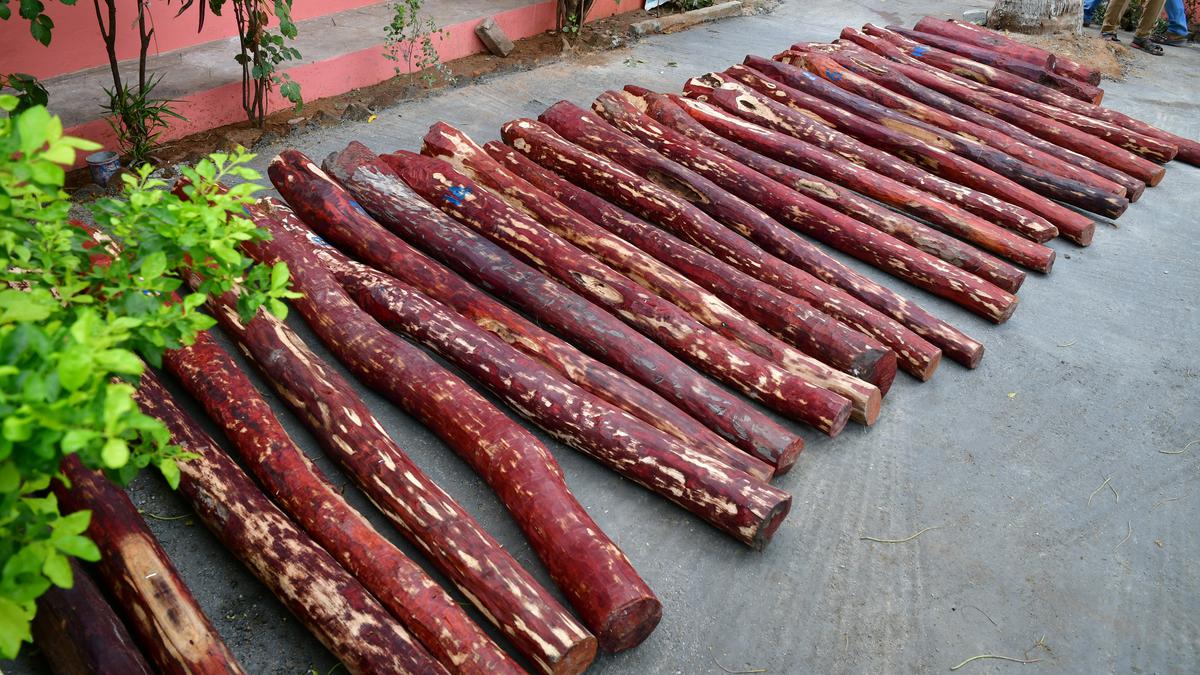What is Red Sanders?
- It is a flora species that are endemic to a distinct tract of forests in the Eastern Ghats region of Andhra Pradesh.
- Geographical conditions required: It usually grows in rocky, degraded and fallow lands with Red Soil and a hot and dry climate.
- Protection Status:
- IUCN Red List: Endangered
- CITES: Appendix II
- Wildlife (Protection) Act 1972: Schedule IV
Key facts about the CITES
- It is an international agreement to which States and regional economic integration organizations adhere voluntarily.
- It was drafted as a result of a resolution adopted in 1963 at a meeting of members of IUCN (The World Conservation Union). It entered into force in July 1975.
- It aims to ensure that international trade in specimens of wild animals and plants does not threaten the survival of the species.
- Although CITES is legally binding on the Parties – in other words they have to implement the Convention – it does not take the place of national laws.
The CITES Secretariat is administered by UNEP and is located in Geneva, Switzerland. The Conference of the Parties to CITES is the supreme decision-making body of the Convention and comprises all its parties.
Q1) What is UNEP?
The United Nations Environment Programme (UNEP) has been the global authority that sets the environmental agenda and promotes the coherent implementation of the environmental dimension of sustainable development within the UN system
Source: UNEP-managed CITES database reveals red sanders smuggling
Last updated on December, 2025
→ Check out the latest UPSC Syllabus 2026 here.
→ Join Vajiram & Ravi’s Interview Guidance Programme for expert help to crack your final UPSC stage.
→ UPSC Mains Result 2025 is now out.
→ UPSC Notification 2026 is scheduled to be released on January 14, 2026.
→ UPSC Calendar 2026 is released on 15th May, 2025.
→ The UPSC Vacancy 2025 were released 1129, out of which 979 were for UPSC CSE and remaining 150 are for UPSC IFoS.
→ UPSC Prelims 2026 will be conducted on 24th May, 2026 & UPSC Mains 2026 will be conducted on 21st August 2026.
→ The UPSC Selection Process is of 3 stages-Prelims, Mains and Interview.
→ UPSC Result 2024 is released with latest UPSC Marksheet 2024. Check Now!
→ UPSC Prelims Result 2025 is out now for the CSE held on 25 May 2025.
→ UPSC Toppers List 2024 is released now. Shakti Dubey is UPSC AIR 1 2024 Topper.
→ UPSC Prelims Question Paper 2025 and Unofficial Prelims Answer Key 2025 are available now.
→ UPSC Mains Question Paper 2025 is out for Essay, GS 1, 2, 3 & GS 4.
→ UPSC Mains Indian Language Question Paper 2025 is now out.
→ UPSC Mains Optional Question Paper 2025 is now out.
→ Also check Best IAS Coaching in Delhi

















